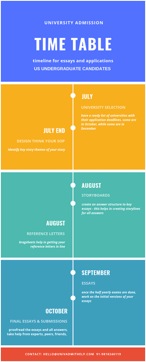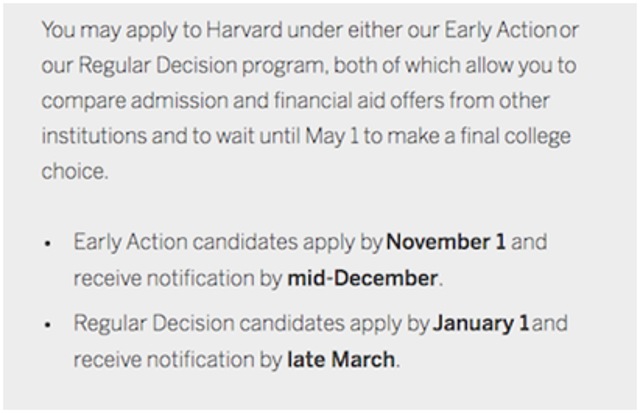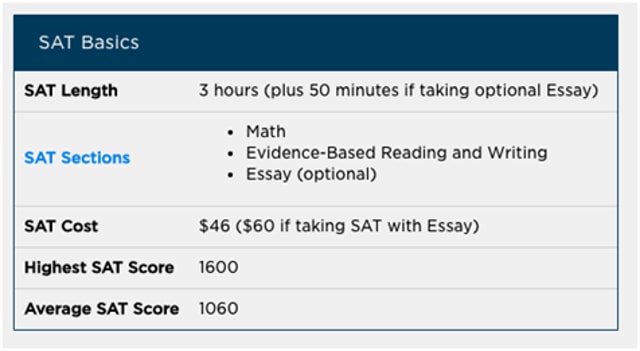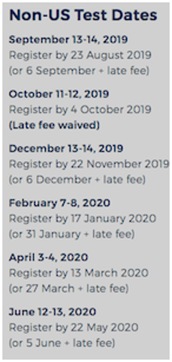US undergraduate admissions 2020: A step-by-step guide
In this note, we shall discuss the US undergraduate admissions process. Other admissions processes are a variant of the same and can be understood as a subset of this process.
Applications to study abroad vary by country and the level that you apply at – either a Masters or a Bachelors. Fundamentally the most onerous process is for the undergraduate admissions to US. That, incidentally, also accounts for the most number of applications that go out of India for study abroad. The other popular destinations are UK and Australia.

In this note, we shall discuss the US undergraduate admissions process. Other admissions processes are a variant of the same and can be understood as a subset of this process.
Unlike India, top colleges abroad offer a multi-dimensional path to entry. In India, while the path is exam-driven and deterministic, USA and other international study destinations offer a multi-pronged approach to admission. This is typically referred as holistic admission process and in essence implies that there is weightage given to the whole profile as opposed to only examination results. This means that you could be an academic superstar or be great in co-curricular pursuits. Some others choose to showcase their leadership and organizational abilities through the positions of responsibility that they have held. Many showcase the depth of their experience and focus on their internships. And most students demonstrate their passion for a chosen field through deep experience in specific extra-curricular, sports or social activities.
The only constant is ‘demonstrated commitment.’ – Picking out a profile that is unique to you and demonstrating excellence through years of hard work and progressive improvement is one sure shot method of crafting a successful application. Copy-paste or just doing an activity for the sake of it usually does not work.
That is why it is extremely important for you to start early. It takes time to build and showcase ‘demonstrated-commitment.’ There are a few general pre-requisites like SAT (or ACT) tests and academic proficiency. Over and beyond those, you can choose and build your own ‘path.’ It is important to give time to the path that you have chosen, and hence starting early is extremely critical.
Here is a timeline to structure your approach in the year leading up to admission –

1.By the time July (in Grade 12) rolls around, you should have narrowed down the colleges you are trying for. Make a college list. It could be a combination of your dream colleges, courses, dream campus, available colleges, courses that you are eligible for. Make an exhaustive list which aims high.
2.Discuss the following admission criteria in great detail with your counsellor over the summer break.

EA Early Action/ ED Early Decision: Many courses offer an Early Action admission. This means an early date. While regular applications are made in December/January, EA deadlines are in October end.
These are sometimes binding. If you are accepted in an EA course, and it is binding, then you are bound to join that course and that alone. Even if, unfortunately the scholarship you counted on doesn’t pull through, you are honour bound to join the course.
They can also be non-binding. So make sure you know what you’re getting into.
Single-choice courses are courses that do not allow you to apply for any other course if applying for this specific one.
RD Regular Decision: December end is the usual deadline for most Regular Decision applications.
A screenshot from the Harvard application page for first year applicants outlines the differences:
3. Register, if you haven’t already, for standardized tests.
SAT I, SAT II
The scores of your SAT’s (1 and subjects, ACT’s, SAT2 are most critical. If you are not happy with your scores, resit. You can sit for the SAT’s more than once if you do not have the requisite marks. There is usually a fine balancing act between the value of time spent for improving the test scores vs. working on the essay and the rest of the application.
Usually, towards the end of the application process, it is advisable to spend more time to build on your application and work on the essays and answers instead of trying to improve test scores by just a notch.

ACT is similar to SAT. The tests are conducted online on various dates staggered over the year. The snapshot from their website gives you an idea.
TOEFL, IELTS

English proficiency tests now are not a selection criterion. They are definitely required but they do not ensure admission, nor do they add value to the rest of the marks.
But if you must submit a score, it must be in the 100’s.
At the same time, work on the Academic Index should not stop. The Academic Index is a score derived from test scores, GPA, etc. Each university has its own method of deriving an AI. It’s the first numerical level that helps filter out applications.
4. Begin working on your storyboards, bragsheets, and essays. Essentially, prepare an organised deep dive, brainstorming session with your own mindset and interests in hand.
•The Storyboards prepare a foundation for your answers to most of the college questions.
•A brag-sheet is essentially a list of things you can brag about! Achievements in class, outside class, as a part of school. Anything and everything that has been a part of your personality development or interests becomes the basis for a letter of recommendation.
•Essays become your Statement of Purpose, Letter of Motivation.
5. Request your Letters of Recommendation.
•Letters of recommendations are a huge part of the admission process. They validate your capabilities, and form the foundation of your credibility with the admission counsellor.
6. Once you are clear about the order of priorities for your college, begin the applications. Make sure they are accurate, truthful, and relevant.
•Fill out and Submit your college applications and all forms by the deadlines.
In the case of EA - ED in the US these deadlines would be October
In the case of an RD application the deadline would be December
For colleges in the UK / Europe, the dates might vary a little but follow the same principles.
7. Interviews, if applicable
8. Result. Review your acceptance and make a decision.
Application to other countries or levels is a subset of the process outlined as above. Here are a few pointers –
a. UK undergraduate – Application through UCAS. Maximum 5 colleges. Oxford, Cambridge and Imperial have a more onerous process similar to the US.
b. All others (Australia Bachelors and Masters, UK Masters, US Masters) – application consists of a personal statement, accompanied by a couple of recommendations along with standardized tests like GRE.
Getting into a top college outside India is a difficult task. You should start early and focus on building a holistic profile highlighting your special achievements. That will help you focus your application and get into your dream college.
(The author is Abhishek Singhal, Co – Founder, UnivAdmitHelp. Views expressed are personal)
Discover the complete story of India's general elections on our exclusive Elections Product! Access all the content absolutely free on the HT App. Download now!
Get latest news on Education, along with Board Exam, Competitive Exam and Exam Result at Hindustan Times. Also get latest Job updates on Employment News









